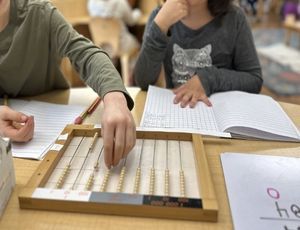
Every October, families and schools across the country face the question of how to approach Indigenous Peoples’ Day and Columbus Day. For many of us, these holidays can bring up complex feelings. Montessori offers us a way to hold that complexity with honesty, balance, and respect for human dignity.
Grounding in Truth and Respect
In Montessori, we first ground ourselves in the big picture. This includes presenting history truthfully, even when it’s uncomfortable. While Christopher Columbus’s voyages were remarkable in their boldness, they also marked the beginning of a period that brought devastating consequences for Indigenous peoples. To honor human dignity, we acknowledge both.
The Human Story of Exploration
Dr. Maria Montessori described the universal human tendencies that drive our development: exploration, orientation, imagination, and communication, among others. Columbus’ journey across the Atlantic can be understood as part of this shared human story of curiosity and discovery. At the same time, we acknowledge that Indigenous peoples had been exercising these same human tendencies for thousands of years, creating thriving civilizations, languages, technologies, and cultures long before Europeans arrived.
Celebrating Indigenous Cultures
Indigenous Peoples’ Day gives us an opportunity to celebrate the beauty, resilience, and contributions of Indigenous communities. Montessori classrooms and families might:
- Read stories or legends written by Indigenous authors.
- Explore maps that show the many nations that existed (and still exist) across the Americas.
- Listen to Indigenous music or learn about traditional art forms.
- Reflect on the continued contributions of Indigenous people today, not just in the past.
Gratitude and Reflection
Montessori places great emphasis on gratitude and stewardship. We can invite children to pause and ask: Who lived on this land before us? How can we honor their legacy? How do we show respect for people whose voices may not always be heard? Simple practices like acknowledging the land, offering thanks to the earth, or caring for nature connect to both Montessori principles and Indigenous values.
Developmentally Appropriate Conversations
How we approach these topics will vary by age:
- Young children can focus on cultural appreciation through stories, art, music, and food.
- Elementary children can begin to discuss colonization and resilience within the context of the story of human interdependence.
- Adolescents can dive even deeper, exploring issues of representation, justice, and equity, or even engaging in service projects that support Indigenous communities.
A Balanced Montessori Approach
Montessori encourages us to reframe the conversation: How do we tell the full human story? We honor the courage of exploration while also telling the truth about colonization. We celebrate Indigenous cultures not only as something from the past but as vibrant, living contributions to our present and future.
By approaching these holidays with honesty and reverence, Montessori classrooms and families can help children grow into compassionate global citizens.
Schedule a time to visit our school in Boise, Idaho, to see how we support young people who understand that our shared human story is both complex and beautiful.





